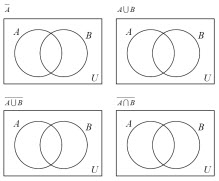This is a follow up to Starting from Scratch (Part I). Whether you’ve already built an online course from scratch or whether you’re facing the inevitability of doing it sometime in the future, it’s like starting with a blank slate.
This semester, I’m building a course shell for Math for Elementary Teachers. It is a course I’ve taught before, but I haven’t taught it for a few years and so there is no “digital” course shell for it. Even though this is a completely traditional course (meeting four hours a week in person), I’m using the opportunity of teaching it to build a digital shell that will (a) enrich the course and (b) will serve as a strong base for an online or hybrid course in the future.
In Starting from Scratch (Part I) and in Dump Schedule-driven Course Design I discussed how to create the general structure of a course shell. Now we begin to fill it with good stuff as we prep to teach the topic.
When we begin, there is literally nothing in the folder for this topic (Sets and Venn Diagrams):

1. Add the written materials you have created yourself. This might consist of a set of notes, worksheets, group activities, or handouts. You should put all the materials in a file format that will open on any platform (PC or Mac). I suggest you use either RTF (rich-text format) or PDF. If you use PDF, make sure that students download Adobe Acrobat Reader to open the files. I also like to add a thumbnail image (if the handout has visuals on it) to remind myself (and the students) what this handout looks like (see below).

Even if you plan to pass these materials out in class, you should place them in the course shell. This will make it easy for y0u to find the appropriate materials to print the next time around, and, in the future, the students in this shell might be fully online students and they will be able to print the files themselves. Having access to the handouts is also handy for students that miss class – they don’t have to wait until the next class to get these materials from you.
2. Plan where you will make video lessons. For every topic there are some points that are harder to understand than others. I do live recordings in class, and I actually plan for these at this step in the process. In the course shell you’ll see “Watch the video on finding intersections and unions (not here yet).” After I’ve edited and produced the video, I will go back and insert the missing videos.
3. Find interactive media. The next thing I look for is interactive media by doing a general Internet search and by looking at more well-vetted resources (like digital libraries or digital materials from the publisher). For math, there are several places I always look: Wolfram Demonstrations, NLVM,and NSDL.

You could easily waste a lot of time browsing through games, applets, videos, etc. so it’s important that you STOP once you find a few good supplements to the topic. There’s always the next semester to find more good stuff!
4. Meet Specific goals. Depending on the course, you may have specific goals that you want to meet as you prep the course. For example, you may want to add a 3-question quiz to the end of each topic. Perhaps you want to look for application problems to include with every topic. Maybe you want to add a concept-oriented question for discussion. This semester, I am checking Wolfram Alpha to see how it handles every topic that we cover and including examples that link to the W|A pages, where appropriate.
5. Add humor and/or videos of interest. Even though this step is the most fun, I save it for last because it is really just the spice that flavors the rest of the material. You’re likely to stumble across most of this while you are doing the rest of your searching. This is where I add cartoons, funny YouTube videos, and interesting TED talks that mention the topic. Honestly, I don’t usually set out to find this stuff, it’s the material you either know about already or it’s the stuff that you slowly accumulate over time. It never hurts to look though!
6. Assignment. I save this step for last, because I don’t know the whole assignment until I see what I can find on the Internet. Usually it’s a mix of reading, some textbook problems (or online homework), and time doing interactive applets. Even though I save this for last, I place it first in the list of items for the section so that it’s easy to find.
Here’s what this looks like when I’m finished:

To see a “live link” (and larger) version of this page, click here.




